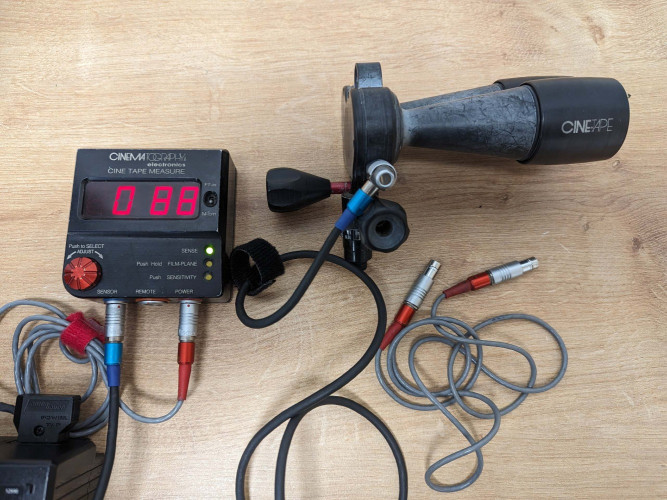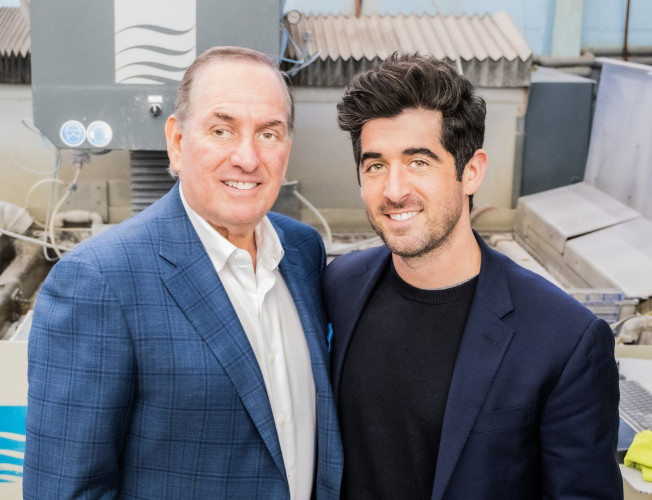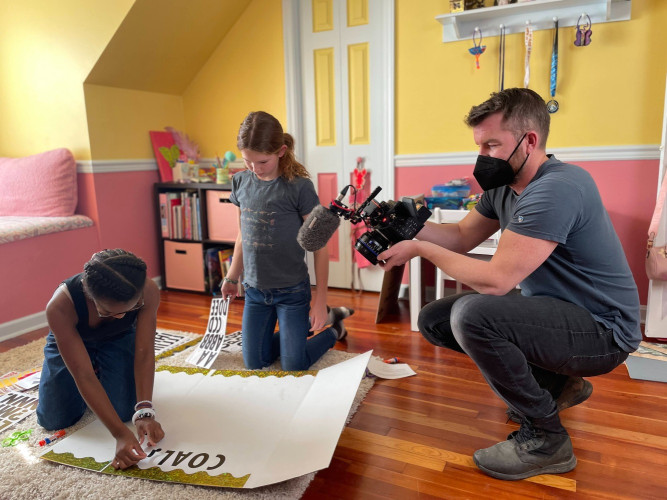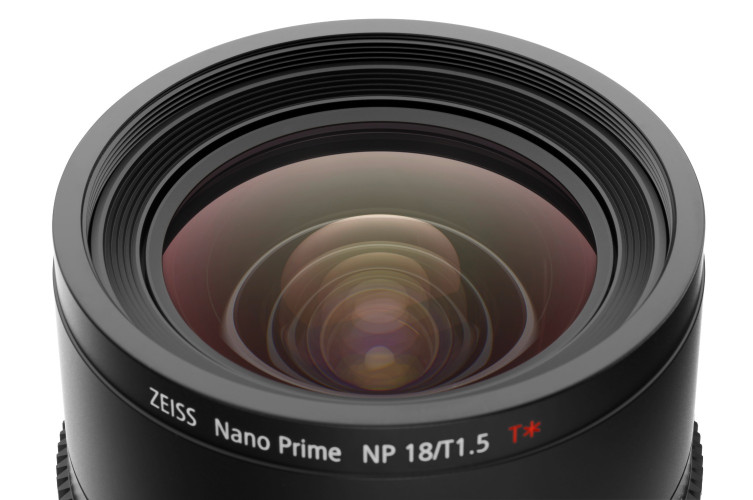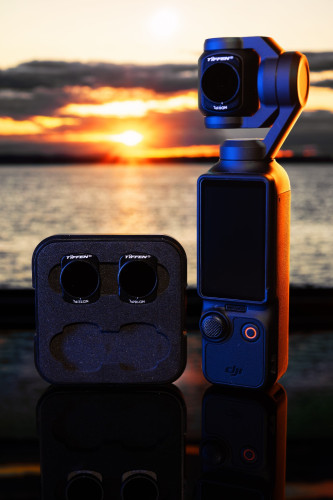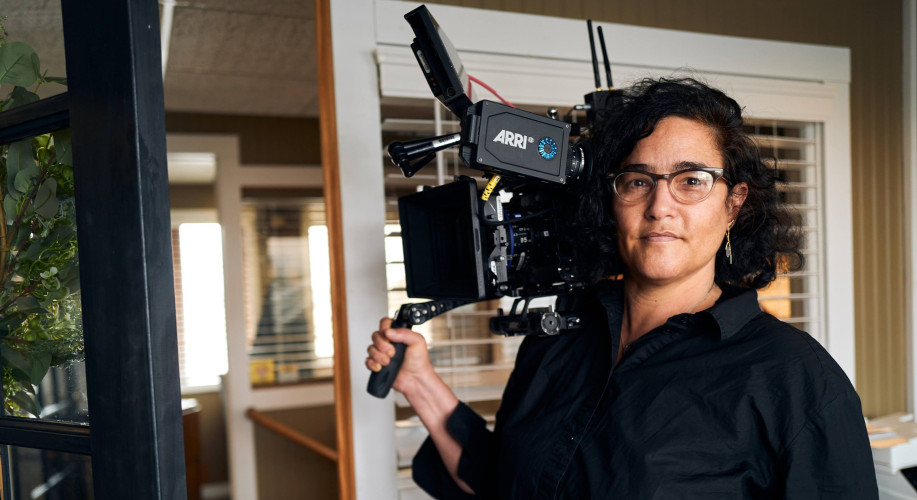Filters for HD Cinematography
Author: Dennis Lennie
Published 1st April 2009
The availability of low-cost HD camcorders with film-style tools, like 24 frame-per-second imaging and quality lenses, has put filmmaking capability in the hands of many.
To achieve a film-style look, a director of photography can add a compliment of optical filters. Such filters can not only make color and other corrections to the image as it is shot, saving expensive post production time, but also achieve visual effects impossible to add later.
While hundreds of filters have been available for both film and video cameras imaging to the raster of a 35mm film frame, the use of 2/3”, 1/2”, 1/3” and even 1/4” imagers has resulted in the need for a redesigned line of HD filters.
“It’s a simple matter of the physics of optics,” explains Bob Zupka, Schneider Optics project manager of the MPTV (Motion Picture and Television) Group. Zupka says that for a given angle of view, a lens for a 35mm film raster has a much longer focal length than that on a 2/3” or smaller imaging raster, with focal length being shortest of all for a 1/4” imager camera. At any individual F-stop, the depth of field of longer focal length lenses is much shallower than on shorter focal length lenses.
“So on a 35mm raster camera, the filter is so out of focus, because it’s so close to the front of the lens, that you can’t really see any detail in the filter. But when you go to smaller and smaller formats, the lens focal lengths become increasingly shorter, and everything from the front of the lens out to infinity starts to come into focus.”
Because these smaller format cameras are in or nearly in focus on the filter, they can pick up the details of particulates or lenslets that filter-makers employ to achieve various looks and effects.
Zupka and his Schneider filter designers went back to the drawing board for HD series filters. “The approach we took was to start with the actual size of a pixel on the chip, in combination with the shortest focal length lens that would be used. From that, we were able to derive the particulate size or lenslet size that needed to be in the filter that would not show up in the image, but still be able to give the cinematographer the desired effect.”
The first two lines of new HD filters called HD Classic Soft and Hollywood Black Magic are derived from Schneider’s popular Classic Soft and Black Frost series. “We’ve re-engineered them so they look exactly like the Classic Soft and Black Frost filters, except that the particulates are so small you can use them on the smallest format cameras,” explains Zupka.
HD Classic Softs, available in strengths of 1/16, 1/8, 1/4, 1/2, and 1, impart a closely confined, very subtle glow to highlights, producing a stylish glow that keeps the scene’s contrast under control, while adding a romantic look. The effect also blends small wrinkles and blemishes, while maintaining an overall sharp focus that conceals the fact that a softening filter has been used.
Each of the HD Classic Soft filters contains a carefully calculated amount of precisely positioned Micro-Lenslets™ that provide a controlled soft image that is overlaid on a sharp, in-focus image, creating In-focus Diffusion™.
The Hollywood Black Magic filters combine the best attributes of the Schneider HD Classic Soft and Black Frost filter series, and are designed to remove unsightly blemishes and wrinkles while providing an airbrushed texture to the image. The filters are available in five strengths from one-eighth to 2, allowing a wide range of diffusion to be selected, from slightly taking off a video edge to removing years off a subject's age.
“I recommend an eighth, a quarter and a half,” said Zupka. “With the Hollywood Black Magic, you can leave an eighth on pretty much all day and it’s going to take a very, very slight video edge off, but not enough to give the look that there’s filtration on the camera.”
Another key to achieving the film-look is to work with a very narrow depth of field, which as previously mentioned becomes more difficult with smaller format cameras and their shorter focal length lenses. “It’s one of the major differences between smaller format camera lenses and 35mm film-style lenses, where the nose might be in focus but the ears might be a little soft,” said Zupka. “That’s one of the looks filmmakers are going for.”
The trick is to work with the lens iris opened as wide as possible, regardless of the amount of illumination in the scene. In order to reduce the amount of light entering the lens, cinematographers use neutral density filters, designed to evenly decrease all colors of light. “You can decrease your depth of field by getting your lens down to an F/2 or F/2.8 aperture, so you can knock the background a little out of focus, giving it more of a film look.”
Many of the small format cameras come with a 2-stop neutral density filter that can be deployed between the lens and the camera. But in order to be able to work in one-stop increments, from a moderately lit scene all the way up to full daylight, Zupka recommends carrying a 1-stop and 4-stop external ND Solid filter as well. Combined with the 2-stop internal ND filter, this allows combinations to cut down light from a single stop to seven stops.
Zupka points out that reducing depth of field can only be done when actually shooting the scene. It cannot later be accomplished in post production.
There are two other ND filters Zupka said a cinematographer is likely to find handy. The first is the Attenuator, which is a graduated neutral density filter. “It goes from about four stops, and it gets gradually lighter to where it’s essentially zero on the other end. And because it’s graduated, there’s no line in the middle that needs to be hidden in the scene.
“The Attenuator is one of the most valuable filters, because you can use it in an indoor condition that has bright daylight coming in through the windows, and by rotating the filter sideways, you can balance your exposure across the room,” said Zupka. “Or there’s the city street scene where there’s shade on one side while the other side is in the sun, it’s very easy, and there’s no graduated line.”
The Attenuator can be rotated in the mattebox to properly position the gradation. “It’s probably the single most valuable filter that someone could have in their kit.” Schneider Attenuators are available in 1-stop, 2-stop, 3-stop and 4-stop ranges.
The second specialized ND filter is the ND Grad. “Half of it is one to four-stop ND, and in the middle there’s a soft line half an inch wide, and the rest of the filter is clear,” said Zupka. “It’s very useful when you’re doing landscape photography, because the sky is usually two stops over. So it gives you the ability to very easily control the sky and balance the exposure to the scene below, with the grad-line hidden in the horizon.”
(Neutral density filters are often measured by Filter Optical Density, where each 0.3 is equal to one stop of f-stop reduction. Thus a 0.9 ND filter would cut the light by three f-stops.)
Linear polarizing filters are another important toolset for the cinematographer. Like a pair of Polaroid sunglasses, they cut can glare. “It’s a very common problem when shooting into a car, where the glare off the windshield won’t let you see into the vehicle,” said Zupka. “By using a polarizing filter and rotating it until the glare is eliminated, you can actually see into the car.”
He pointed out that glare elimination is another task that can only be accomplished while shooting. It cannot be later removed in post in order to see what’s behind it.
A typical polarizing filter removes one and two-thirds stops of light entering the lens. Because certain night scenes require glare elimination but will be more difficult if not impossible when losing one and two-thirds stops, Schneider developed the One Stop Polarizer, which cuts only a single stop of light entering the lens.
Contrast filters are important when shooting HD because of an inherent difference between the exposure latitude of digital cameras and film.
“Film might have 14 to 17 stops of latitude, where you could image the darkest darks to the brightest brights, and capture all that information,” said Zupka. “Most video cameras, and especially some of the smaller chip cameras, only take about seven to nine stops.”
If the electronic cinematographer exposes for detail in the highlights, it can cause loss of detail in the shadows, or vice-versa. If these details are not captured in the camera, they cannot be recreated in post production.
Zupka recommends Schneider Digicon™ contrast control filters, available in strengths of 1/2, 1 and 2. Digicons have no effect on resolution, but lower highlights to provide more exposure in the highlights and raise the black level, basically compressing the scene before it gets into the camera.
“By using a higher strength Digicon™, either a number one or number two, you can actually get details in the shadows while keeping highlights from blowing exposure.” Said Zupka. “In the lighter grades, some people, especially shooting in 35mm, choose to use it because it looks like a lower contrast film stock.”
Color effects filters have also been developed with the specific characteristics of digital cinematography cameras in mind. To more closely imitate the film-look, Zupka has three recommendations.
“The Maui Brown is very nice on skin tones,” he said. “It blends skin tones, especially if you have very light and dark skinned actors in the same scene. If you use the Maui Brown, it will enhance the darker skin and blend it with the lighter skin so there isn’t such a color contrast between the two. It’s wonderful for desert scenes, or outdoor photography where you get the full range of colors in foliage,” said Zupka. “It pops red colors extremely well, making them stand out, without affecting color rendition so the whites stay white.” Zupka suggests a Maui Brown in 1 and 2 strengths.
Another filter that helps smooth transition between black and white complexions is the Chocolate. Not only is it good for actors, but it also helps pop out foliage in a scene.
The Skintone Enhancer warming filter is designed to add warmth to skin tones, and also accentuates foliage and architecture while reducing excessive blue in outdoor open shade.
A final difference that has become apparent about digital cameras is their sensitivity to infrared light. Many neutral density filters do not block IR light, so as cinematographers add ND filters to allow a wider aperture for less depth of field, more IR light passes through the lens to the imager and can add a magenta cast to some black materials.
The True-Cut IR filter removes light just beyond the visible spectrum in the infrared range, to prevent IR pollution of the image.
Use of optical filters has long been the “secret sauce” of motion picture directors of photography. These filters have now also become a critical tool for the electronic cinematographer working to achieve a film-look from an electronic camera.



